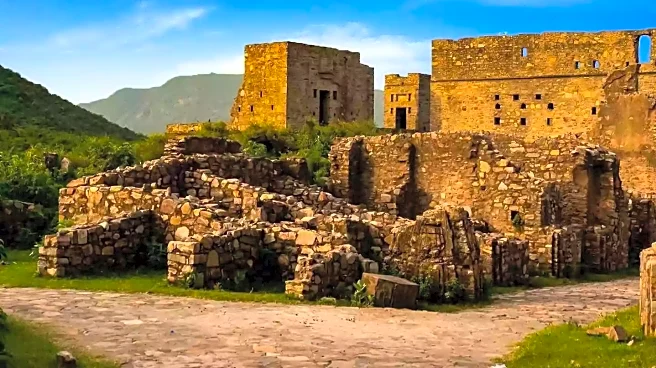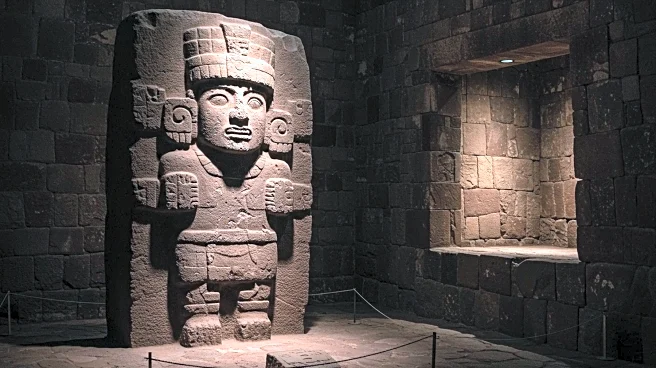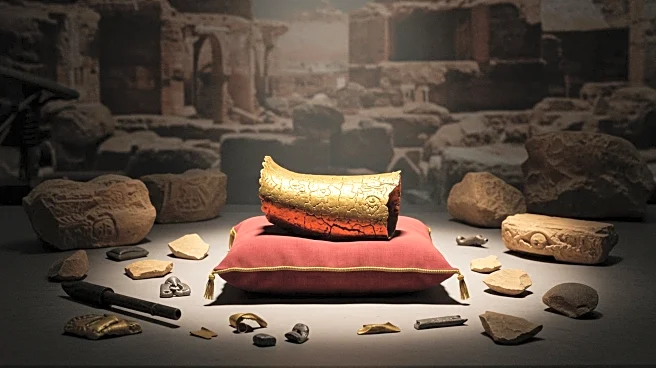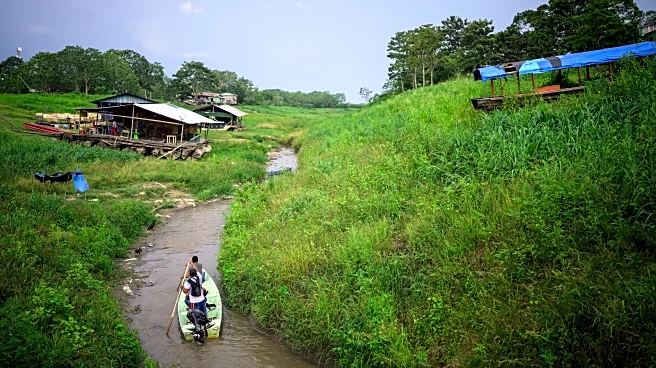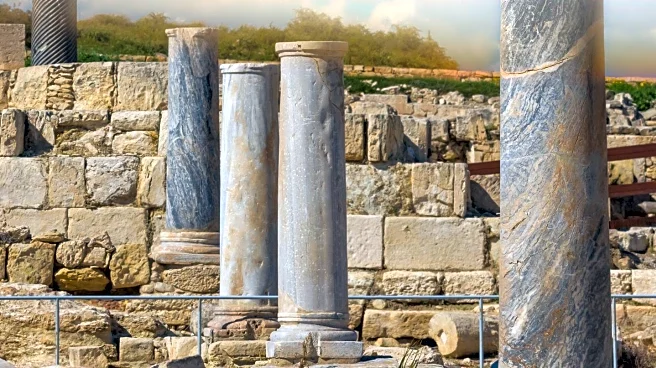What is the story about?
What's Happening?
Archaeologists have uncovered the ruins of an ancient temple complex belonging to the Tiwanaku civilization in Bolivia's Caracollo municipality. This discovery, located southeast of Lake Titicaca, is significant as it lies outside the previously known expansion areas of Tiwanaku. The temple, named Palaspata, features architectural elements typical of Tiwanaku style, such as a terraced platform and sunken courtyard. The site is strategically positioned along a historical trade route, suggesting its role in facilitating trade and exerting sociopolitical influence. The temple's discovery sheds light on the interconnectedness of Tiwanaku territories and their expansion strategies.
Why It's Important?
The Tiwanaku civilization, which predates the Inca Empire, remains enigmatic due to limited archaeological evidence. The discovery of the Palaspata temple provides new insights into the society's religious, political, and economic structures. Understanding Tiwanaku's expansion and trade strategies can offer broader perspectives on pre-Inca civilizations and their development. The temple's location and design suggest it played a crucial role in controlling trade routes and exerting influence over surrounding regions, highlighting the complexity of Tiwanaku's societal organization.
Beyond the Headlines
The Tiwanaku civilization's collapse is theorized to have resulted from environmental factors and social unrest. The discovery of the Palaspata temple may prompt further exploration into the causes of Tiwanaku's decline and its impact on subsequent societies. The alignment of religious, political, and economic institutions within Tiwanaku offers a unique perspective on ancient state formations and their evolution without external influences.
AI Generated Content
Do you find this article useful?
